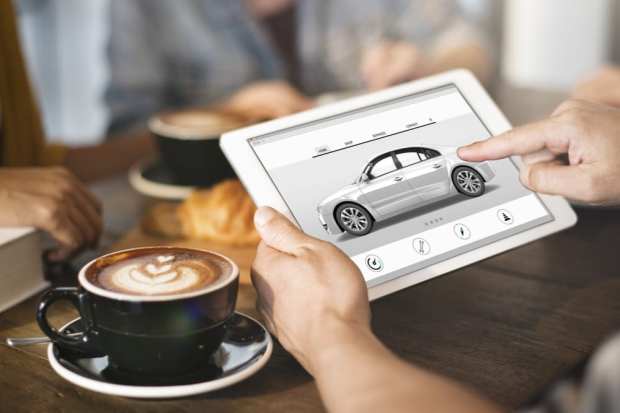Vroom CEO: Selling Cars Online Takes More Than Just Having A Website

U.S. car culture has been making a big comeback, driven by a global pandemic that’s pushed a major restructuring of many consumers’ lives.
After all, a car isn’t just a way to travel in these days of social distancing — it’s become a place to eat, a way to go the movies and even your seat at a rock concert.
CEO Paul Hennessy of online car selling platform Vroom told Karen Webster that our relationships with our cars have been changing, which makes for interesting times in his business.
Hennessy said the market is changing a lot in some ways, but in other ways — like the reasons why people buy vehicles — the change hasn’t been all that dramatic.
“All the normal reasons that people secure another vehicle are still in effect,” he said. “Sometimes it’s a life-driven event — the two-seater car no longer works because we’re having a child and now it becomes an SUV or something like that.”
But he said car sales are quickly going digital in COVID-19’s wake as consumers realize that purchasing vehicles doesn’t require burning a day of one’s life visiting multiple dealerships to find the right deal on the right model. Hennessy said platforms like Vroom make it possible to search through thousands of cars nationwide, arrange financing and have a vehicle delivered to one’s driveway — all from the comfort of one’s living room.
He said that’s an easier, faster and more transparent process than what traditional car dealers offer. In fact, Hennessy said the challenge now for brick-and-mortar dealerships is the same one that almost all physical retailers face. Most have completed a rapid dive into digital, but the task now is to learn how to really deliver digital services properly or risk being disrupted by players that have been doing digital since Day One.
“It’s going to be a real challenge for traditional dealerships that run brick-and-mortar sites very well to suddenly become eCommerce companies,” he said. “And I would suggest that there’s a big difference between having a website and being an eCommerce company and between delivering a car in your neighborhood and having a nationwide logistics network.”
The Auto Industry’s Big Shift
Hennessy said that the biggest change Vroom has seen in the auto market thus far is a real shift in demand in urban areas.
Some of that stems from COVID-related shifts in consumer behavior, like laying off of ridesharing services and public transportation over safety concerns. But peel back the onion a bit and he said he also sees consumers relocating from the heart of major metros to surrounding suburbs — and needing to buy a car to support that shift.
“I would specifically say that as a result of that migration, that shifting of city demand is really more of a move to suburban demand,” Hennessy said.
Moreover, he said the way that consumers are relating psychologically to their cars has changed as the pandemic has constrained Americans in homes and altered how they deal with retailers and restaurants. Hennessy said that’s feeding rising demand that Vroom is seeing on its platform.
“We’ve always known that vehicles were an expression and an opportunity of freedom for individuals — the whole idea of concepts like the open road and exploring and things like that,” he said. “But now, the car has actually become a vehicle for safety as well as freedom.”
The other change Vroom has noted is that consumers are purchasing at a slightly lower-than-average price point — in the mid-$20,000s range, down from the upper $20,000s. That’s the clearest effect Hennessy is seeing of economic uncertainty impacting the market.
He said it’s not depressing consumer need for cars or purchases of them, but slightly curtailing how much debt they’re willing to take on in uncertain times. Hennessy said that’s why pricing transparency is suddenly so important for consumers — and among the factors driving the push to digital across the entire auto market.
The Market’s Digital Transformation
Hennessy said Vroom has been building scale more rapidly than usual for the simple reason that consumers realize they no longer have to visit 10 dealerships and haggle over price.
He said that’s an experience no one actually likes, but that consumers had been mostly sticking with it due to inertia and lack of better options. But as digital presented better options amid the pandemic, consumer expectations rose.
Hennessy said Vroom is scaling up because it was built to meet those kinds of demands given its inventory of about 10,000 cars nationwide, plus logistics to deliver directly to a customer’s door. And the company has lots of data support for every piece of inventory.
“We have over 40 data scientists and data engineers that think about nothing but finding the right cars that match demand, making sure they’re priced to move [and] making sure that the consumers value the price,” he said.
Hennessy said that’s hard for most local dealers to compete with, as they typically have a few hundred cars on their lots at most and lack a team of data scientists to price and curate their selection. He said even dealers who’ve made rapid pivots to offering digitized versions of their physical inventories will need to innovate as the competition for selling cars increasingly moves online.
“Some dealerships will be able to figure it out, I have no doubt,” Hennessy noted.
But he said the ones that do will have to break out of their old paradigm of thinking first about their profitability and instead start by understanding their customers’ end-to-end omnichannel journeys to purchasing cars.
